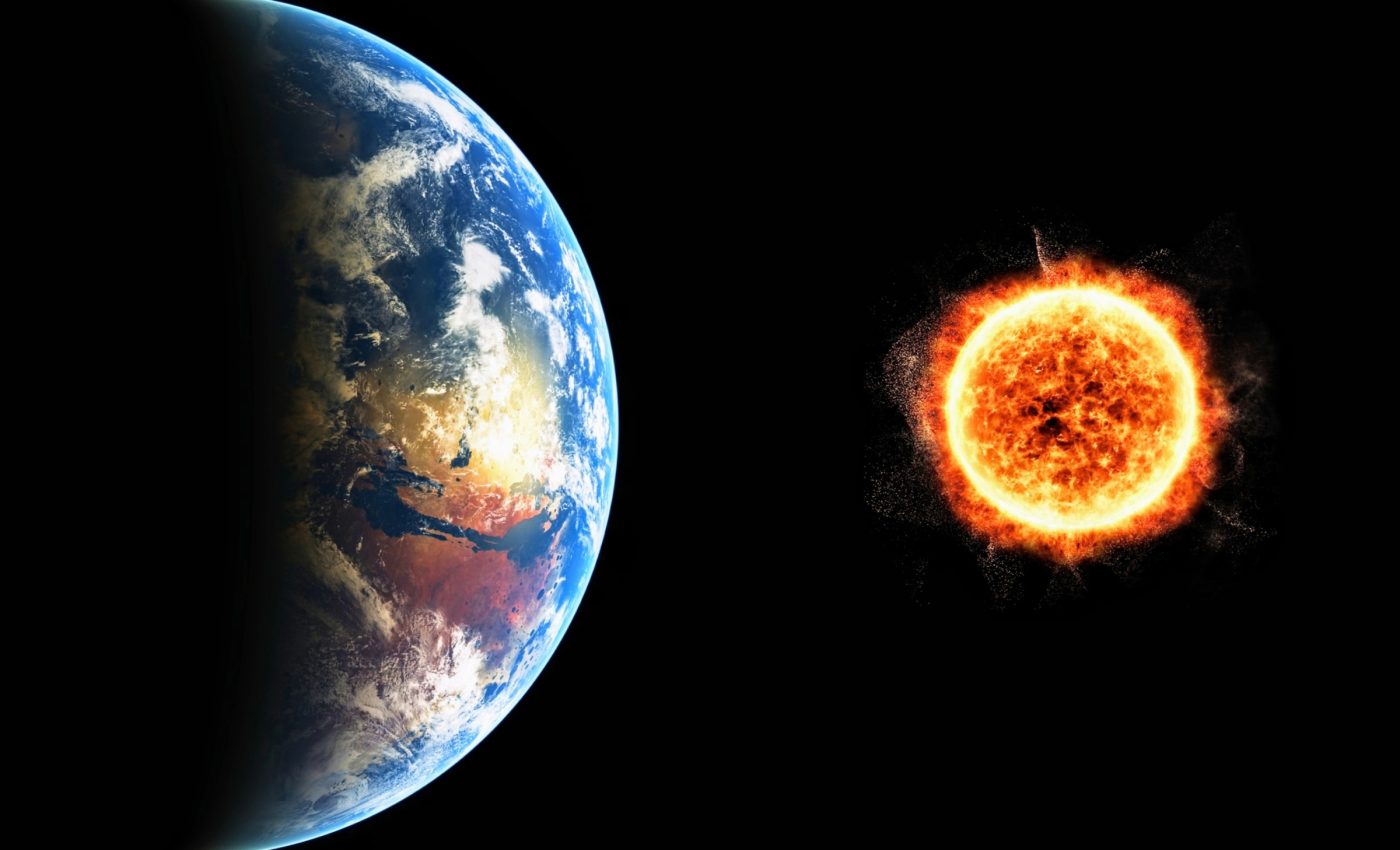
Geomagnetic superstorm caused major changes in the atmosphere
On May 11, stargazers across the southern United States were treated to an unexpected display of the northern lights, while, at the same time, a GPS-guided tractor in the Midwest failed to hit its target. What connects these seemingly unrelated events?
According to two newly published studies co-authored by Virginia Tech‘s Scott England, both incidents were caused by an unusually powerful geomagnetic superstorm.
Atmospheric impacts of the geomagnetic superstorm
“The northern lights are caused by energetic, charged particles hitting our upper atmosphere, which are impacted by numerous factors in space, including the sun,” explained England, an associate professor in the Kevin T. Crofton Department of Aerospace and Ocean Engineering.
“During solar geomagnetic storms, there’s a lot more of these energetic charged particles in the space around Earth, so we see a brightening of the northern lights, and the region over which you can see them spreads out to include places like the lower 48 states that usually don’t see this display.”
Using NASA’s GOLD instrument, England and a team of collaborators from universities and industry tracked the upper atmospheric event on May 11. The research revealed that this geomagnetic storm was the most intense of its kind captured in the past 20 years.
Major changes in the upper atmosphere
The findings, now published in the journal Geophysical Research Letters, were detailed in two studies.
The first, led by Deepak Karan from the University of Colorado, Boulder, documented unprecedented changes in the distribution of particles in the upper atmosphere caused by the geomagnetic superstorm.
The second study, led by Virginia Tech alumnus J. Scott Evans, focused on changes in atmospheric composition and temperature.
Observations of a geomagnetic superstorm
Among their observations, England noted witnessing some “delightful swirly patterns” for the first time and a dramatic movement of air away from the aurora, leading to the formation of enormous vortices larger than hurricanes.
Specific observations included unpredictable shifts of low-energy charged particles from the equator toward the aurora.
The experts identified two types of charged particles: low energy and high energy, the latter posing risks to humans in space and to electronic devices.
The team also noted changes in temperature and pressure likely responsible for the swirling patterns and vortices observed.
Furthermore, there were alterations in the location and spread of low-energy particles, which can negatively impact GPS, satellites, and the electrical grid.
Was this geomagnetic storm different?
“As the aurora intensifies, you see more lights, but along with that, there’s more energy entering the atmosphere, so it makes the atmosphere near the poles very hot, which starts to push air away from the poles and towards the equator,” England explained.
“This data poses a lot of questions like, did something really different happen during this geomagnetic storm than has happened previously, or do we just have better instruments to measure the changes?”
These questions have significant implications for the technology that orbits in the upper atmosphere, a region extending from about 60 to 400 miles above Earth’s surface, home to satellites and the International Space Station. This part of the atmosphere is dynamic, with charged particles creating an ionosphere that behaves like a constantly fluctuating electric blanket.
While the upper atmosphere’s temperature and composition naturally vary, especially between day and night and across seasons, the influx of energy during geomagnetic storms causes more extreme changes.
Nearing the peak of the solar cycle
England noted that particles in Earth’s atmosphere are influenced by numerous factors, including solar activity.
During a solar geomagnetic storm, an intense burst of radiation from the sun alters the composition and behavior of atmospheric particles. This explains why, in recent months, the northern lights have been visible in locations where they are rarely seen.
“The number of sunspots, flares, and storms changes with an 11-year cycle that we call the solar cycle,” England said. “The number of flares we are seeing has been increasing gradually for the last couple of years as we move toward the peak of the solar cycle.”
Beyond the visual spectacle of the northern lights, geomagnetic storms can disrupt our technology. GPS and radio signals, which pass through the ionosphere, can be affected by these atmospheric fluctuations, leading to navigation and communication issues.
Geomagnetic superstorm impact on technology
While many factors, from Earth’s weather to space weather, can influence this crucial atmospheric layer, much remains to be learned about the interactions between the upper and lower atmosphere and their broader impacts.
England noted that these storms can also increase electrical currents that flow around the Earth, which can impact technological devices that use very long wires.
“In recent years, there have been impacts to the power grid when too much current was flowing through the wires,” said England. “During the largest geomagnetic storm ever recorded, the Carrington Event in 1859, these currents caused telegraph systems – peak technology at that time – to catch on fire.”
Scientists believe that a storm similar to the 1859 Carrington Event could cause catastrophic disruptions if it occurred today, potentially leading to an “internet apocalypse” that could knock large numbers of people and businesses offline.
While the May 11 storm did not cause such drastic consequences, with the peak of the solar cycle expected to arrive in July 2025, we are still about a year away from fully understanding the potential effects.
“One reason we study geomagnetic storms is to try and build models to predict their impacts. Based on the solar cycle, we’d expect the conditions we’re seeing this year to be around for about the next two years,” England concluded.
—–
Like what you read? Subscribe to our newsletter for engaging articles, exclusive content, and the latest updates.
Check us out on EarthSnap, a free app brought to you by Eric Ralls and Earth.com.
—–













